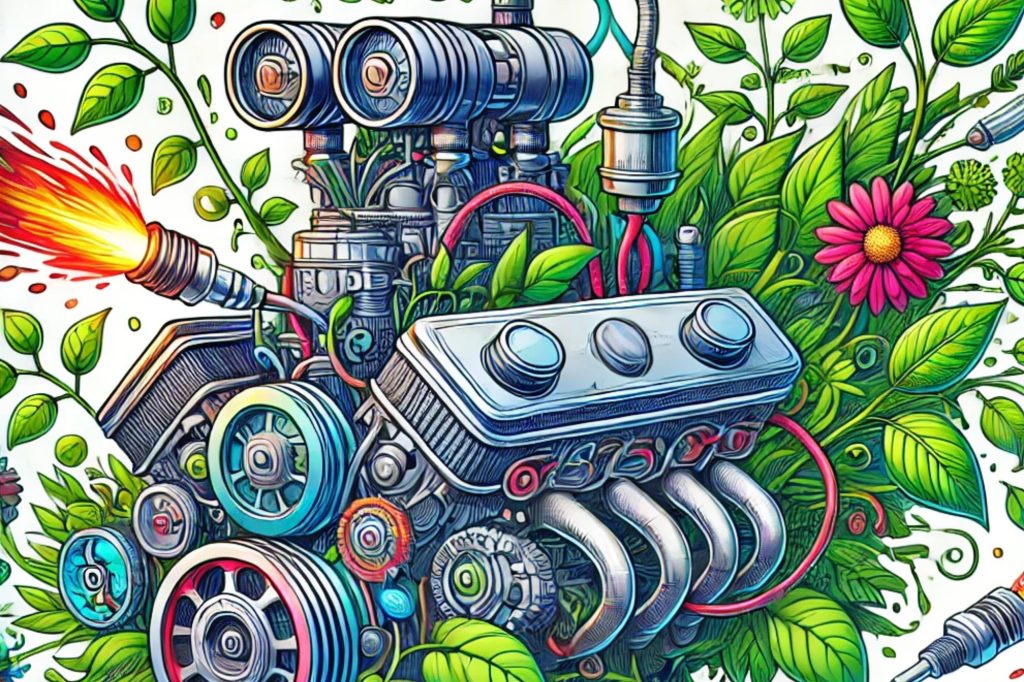Chapter 18: Energy Flow

Every machine needs a drivetrain – a system that takes raw energy and converts it into forward motion. In a car, the engine’s combustion is transferred through gears, axles, and differentials to propel the vehicle.
In plants, the drivetrain is the metabolic system that converts sunlight into usable biological energy – a system that runs from chloroplast to mitochondria, from photon to sugar, and from sugar to ATP. It’s how light becomes life.
Photosynthesis: The Primary Gearbox
Chloroplasts are the engine block of light capture. Inside them, photosystems operate like twin turbochargers:
Photosystem II (P680) captures high-energy photons and splits water, releasing oxygen and electrons
Photosystem I (P700) boosts those electrons further, powering the production of NADPH
Alongside this, a proton gradient is built across the thylakoid membrane, driving ATP synthesis
These are not just reactions – they’re precision mechanics, tuned over billions of years. Electrons flow, protons pump, and energy is spun into molecular currency.
Sugar: The Transmission Fluid
The glucose and other carbohydrates created in photosynthesis are the transmission fluid of the plant. They’re energy-dense, flexible, and can be rerouted as needed:
Used immediately for growth and maintenance
Stored as starch or converted into structural components
Shipped to roots, fruits, or growing tips as the plant’s demand map shifts
Where and how that sugar flows is like routing torque in an all-wheel-drive system – dynamic, responsive, and optimized for conditions.
Respiration: The Final Drive
In the mitochondria, sugars are broken down in a tightly regulated process to generate ATP. This is the final drive gear, converting stored energy into metabolic motion:
Glycolysis breaks down glucose in the cytoplasm
The Krebs cycle spins in the mitochondrial matrix, releasing electrons
The Electron Transport Chain generates a proton gradient to power ATP synthase
This is where the plant’s rubber meets the road – cell division, enzyme activity, membrane transport, and everything else is powered from here.
Energy Efficiency and Redundancy
Plants are not wasteful. Excess light can be safely dissipated. Alternative pathways like photorespiration and the oxidative pentose phosphate pathway offer backup gears for stress conditions.
And systems like C4 and CAM metabolism offer turbocharged alternatives for CO₂ acquisition under harsh environmental conditions – just like switching into low gear for steep climbs.
The Takeaway
The plant’s energy flow system is a high-efficiency drivetrain that captures sunlight, channels it into sugars, and converts those into metabolic horsepower. It’s precise, adaptive, and durable.
From light to life, every component is synced for maximum traction.

